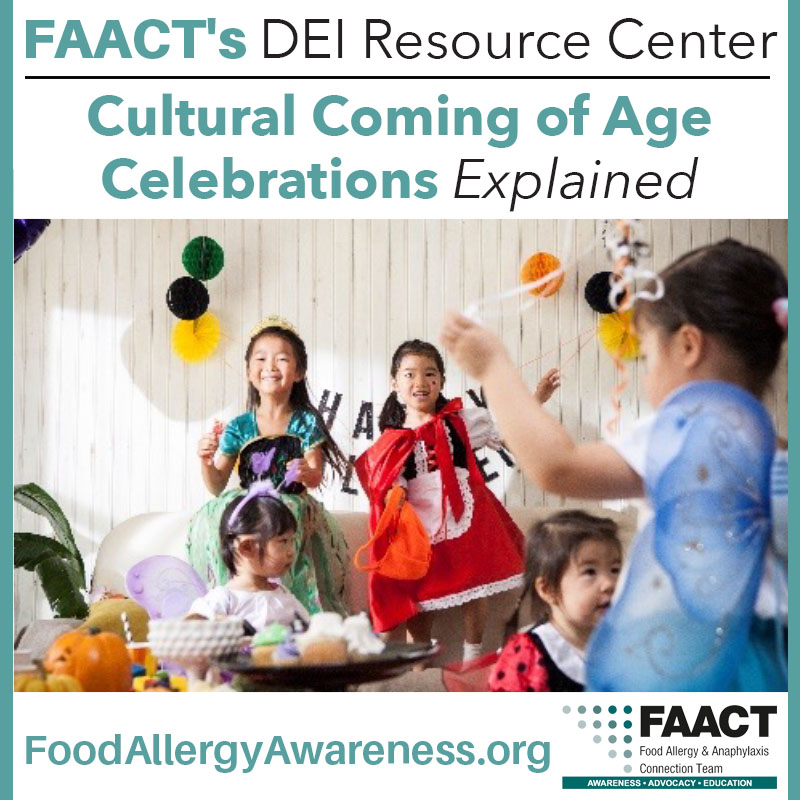DEI Resource Center
Community DEI Support
Back to Category View
Cultural Coming-of-Age Celebrations Explained
Our world if filled with many different cultures and traditions. As youth mature and come of age, families and communities may celebrate in different ways. As with any celebration involving food, FAACT encourages working with your board-certified allergist to create a meal plan that is safe for youth and adults managing food allergies so you can fully enjoy all cultural celebrations.
Here are a few cultural traditions you may encounter.
Latino/Hispanic
Quinceañera: A celebration of a young girl transitioning into womanhood, this celebration typically takes place at the young lady’s 15th birthday party, sometimes referred to as a Sweet 15 party. Parents often show pride in a religious fashion for the gift of their beautiful daughter. Young ladies also have an opportunity to have fun and share time with friends and family. Traditions include selection of a theme for the party as well as an elegant dress for the honored young lady. The celebration can include guest books, custom-designed cakes, Quinceañera dolls, ceremonial pillows, elegant invitations, live bands, dancing, and more.
Judaism
Bar/Bat Mitzvah: At age 13 for boys and age 12 for girls, children make a commitment to their Jewish faith through a celebration called a Bar Mitzvah (for boys) or Bat Mitzvah (for girls). At this age, youth are considered adults in the Jewish faith, old enough to be responsible for their own actions and decide for themselves how they would like to practice Judaism. After a traditional ceremony, family and friends celebrate at a fun-filled event.
American
Sweet 16: A Sweet 16 party is often held once a teen is of age to get their first legal identification, a driver’s license. These events are not religious in nature – this is more of a party-style celebration, traditionally with teens dressed more formally, although that tradition is falling out of favor today.
Japanese
Seijin-no-Hi: In this celebration, 20-year-olds dress up in traditional Japanese attire on the second Monday of January and go to a ceremony in local city offices, receive gifts, and party with friends and family. This Coming-of-Age Festival acknowledges when Japanese youth become mature, contributing members of society. This is also the age at which they can vote.
Hindu
The Sacred Thread Ceremony: This is a ceremony practiced by some Hindu families for boys at 7 years old. In this ceremony, it is believed boys can take on religious responsibilities. Girls can sometimes be honored in this way but are not usually given an opportunity to wear the sacred thread. The thread, known as the janoi, is made of three strands that stand for purity of thoughts, words, and actions. The child may also be appointed a guru (spiritual teacher) to help them study scripture.
Amish
Rumspringa: At age 16, young Amish people are allowed to enjoy things that are not part of their traditional culture to see what is outside of their world. The hope is that they will return to their own culture after this period of time. When they return, they are baptized into the Amish way living and practicing their faith. If they plan to return, there is a time limit of approximately two years, although each community can set their own guidelines on the time period.
Download FAACT's Cultural Coming-of-Age Celebrations Explained handout.